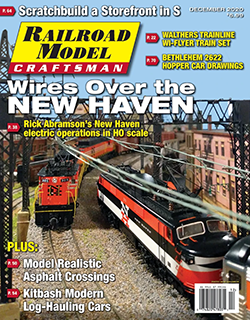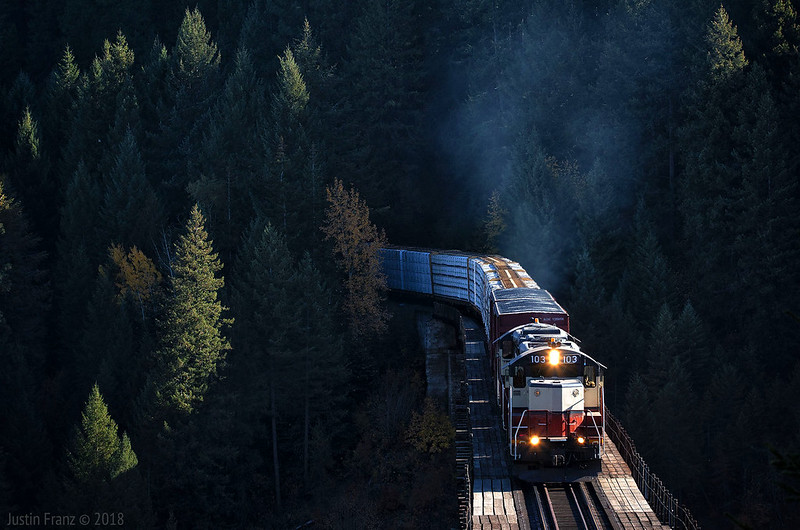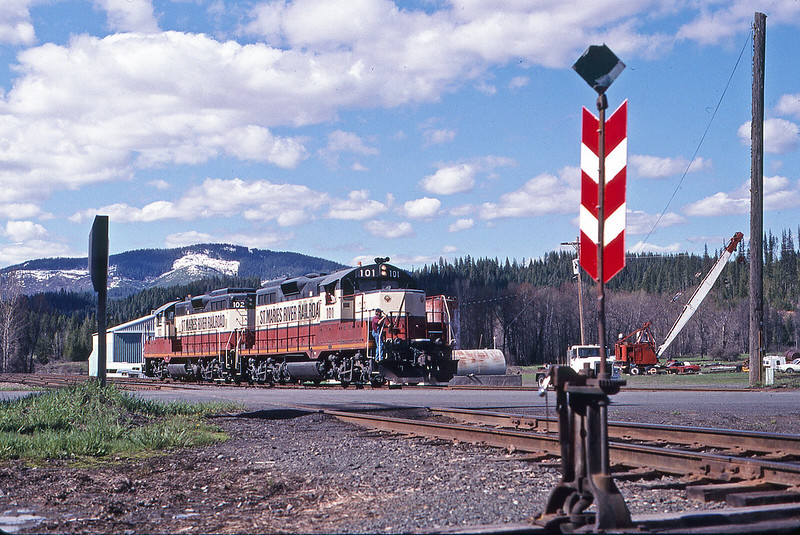 The first time I saw a logging railroad — not a railroad that happened to haul logs, but one whose existence solely relied on the timber industry — was in May 2008. Within a few minutes of arriving in St. Maries, Idaho, I instantly understood why railfans and model railroaders alike have been infatuated with logging railroads for decades.
The first time I saw a logging railroad — not a railroad that happened to haul logs, but one whose existence solely relied on the timber industry — was in May 2008. Within a few minutes of arriving in St. Maries, Idaho, I instantly understood why railfans and model railroaders alike have been infatuated with logging railroads for decades.
St. Maries was a crew change point on the Chicago, Milwaukee, St. Paul & Pacific’s failed and fabled main line to the Pacific Northwest, deep in the Idaho Panhandle. The Milwaukee Road had arrived in the Northwest decades after its competitors but in the early 20th century it was able to cobble together enough traffic to survive, including serving the mills around St. Maries, which were fed with fresh-cut timber off a branch south of town toward Clarkia and Bovill. Even in later years, when traffic dwindled on the Pacific Coast Extension, St. Maries remained a busy little terminal.
In 1980, when the Milwaukee Road abandoned its main line west of Miles City, Mont., some pieces of the railroad that were still useful were saved and sold. The Potlatch Lumber Company purchased the main line between Avery and Plummer, Idaho (where the Milwaukee interchanged with Union Pacific), and the branch south of St. Maries to Bovill. Potlatch called its new acquisition the St. Maries River Railroad. To run the railroad, the company purchased three GP9s and two SW1200 switchers from Milwaukee along with maintenance of way equipment, log cars, and a caboose. Most of the employees were ex-Milwaukee too.
While the St. Maries’ roots were with the Milwaukee Road, it still possessed all the artifacts of the traditional logging railroads that had come before it: lots of second-hand equipment, determined self-sufficiency, and a singular focus on moving logs to the mill and finished lumber to market.

A pair of GP9s lead a trainload of lumber between St. Maries and Plummer, Idaho, in October 2018. Photo by Justin Franz.
That last point — the singular focus on one commodity — is probably why modelers have long gravitated toward logging railroads. Most railroads move many different types of products to and from different types of industries. To an outsider (someone who doesn’t know railroading), it could be hard to describe its purpose. But a logging railroad is easy to understand. It’s also a system that can be depicted in a smaller space. Many model railroads move cars from industry to staging or vice versa; the first or final move of a mostly unseen process that in our minds takes place beyond the staging yard. But just about every move on a logging railroad can be replicated in miniature. The same goes for why a logging railroad would be so attractive to a photographer: the railroad’s purpose is right there in the open on the 40 or 50 cars trailing the locomotives.
When I first came to St. Maries, I was a freshman journalism student at the University of Montana, about three hours east. While there was no indication at the time that the railroad would be shut down, I knew that unique operations like the St. Maries would not last forever, so I made multiple trips to see and photograph the log train that ran between Clarkia and St. Maries. The train usually ran with two GP9s and a caboose, a throwback to an earlier era in railroading that I had only gotten quick glimpses of as a child. It turns out my instinct was right: About a year after my first visit, Potlatch decided to start trucking the logs to the mill. Today, the St. Maries continues to move finished lumber from the mills to the UP interchange at Plummer, but the branch to Clarkia is now only used for stored cars.
The end of the St. Maries log train would kick off the final round of closures among North America’s traditional logging railroads. Simpson Lumber Co. once had a sprawling railroad system in western Washington, but by the 20th century, only a small section of it remained near Shelton, about 90 minutes south of Seattle. In 2015, that line was shut down. On Canada’s Vancouver Island, Canfor’s Englewood Railroad was moving logs until 2017 when the railroad was shut down following a fatal accident. While the parent company toyed for months with the idea of reopening the railroad, it eventually decided to do what Potlatch had done and move all of its logs by truck. I lucked out in being able to see and photograph Simpson’s operation before it closed, but I was too late for the Englewood; I was planning my first trip to Vancouver Island the same year the railroad shut down.
While I knew the St. Maries River Railroad was a special thing the moment I saw it that first time in May 2008, I did not know I was about to witness the final days of traditional logging railroads in North America — a tradition that now only lives on in old photographs and in miniature. — Justin Franz



